Bolivia’s cuisine isn’t as celebrated as the cuisines of Peru, Argentina, or Brazil, which is unsurprising considering Bolivia is one of the least visited countries in South America.
When many people think of Bolivia, Bolivian food isn’t the first thing that comes to mind. For most, it’s Salar de Uyuni. And who can blame them? This gigantic salt flat measuring over 10,000 sq km (3,900 sq mi) is a sight unlike any other. For many travelers, it’s a dream destination, something to tick off your bucket list.
Salar de Uyuni may be one of the biggest reasons why tourists visit Bolivia, but as these next fifteen traditional dishes will show you, one of the best and often most overlooked reasons has to be the food.
BOLIVIAN CUISINE QUICK LINKS
If you’re visiting Bolivia and want to really dig into the cuisine, then you may be interested in joining a food tour.
TOURS & OTHER SERVICES
- Food Tours: Food and Wine/Drinking Tours in Bolivia
- eSIM: Bolivia eSIM
Save This on Pinterest!
No time to read this guide on traditional Bolivian foods? Click on the save button and pin it for later!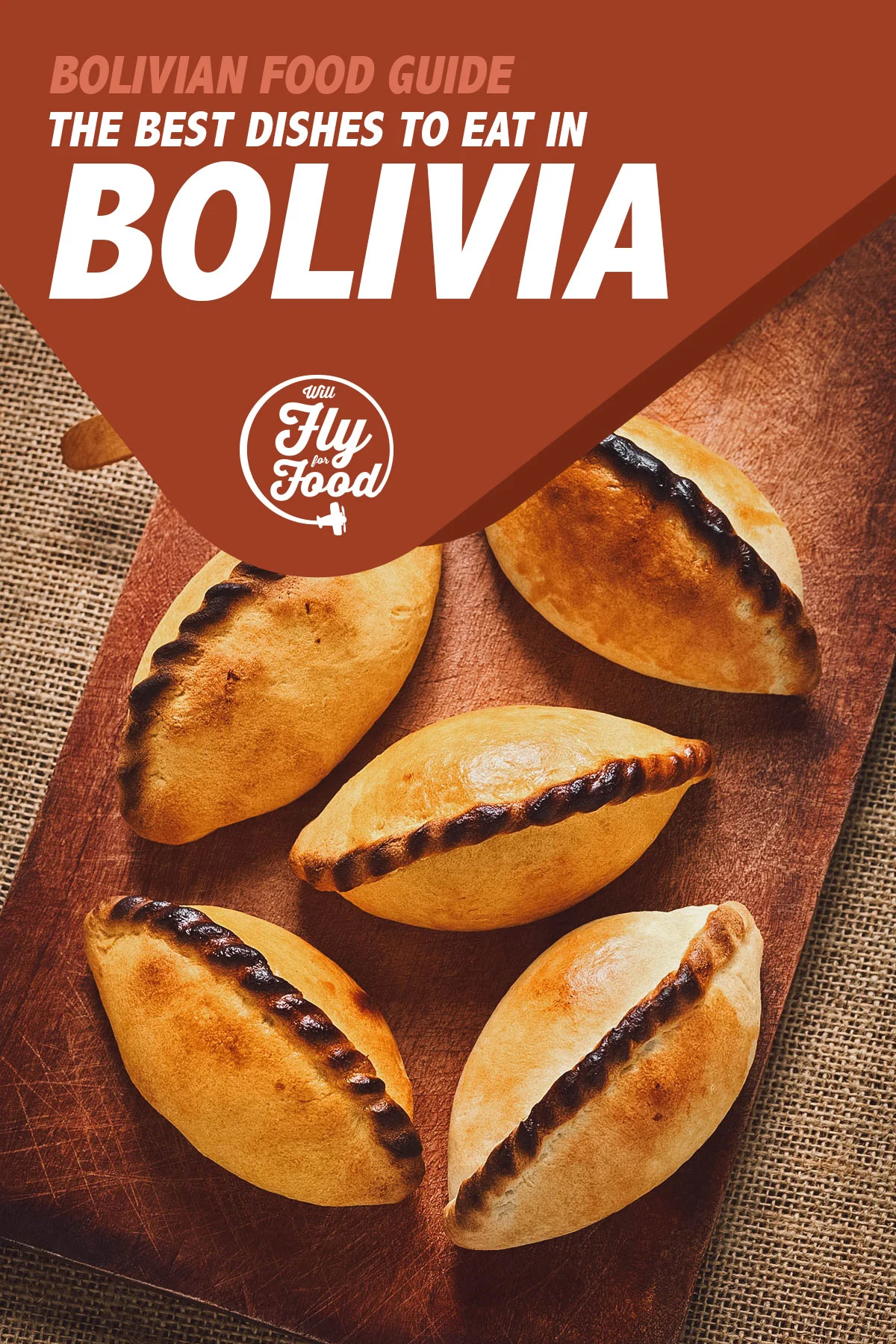
Photo by ildi_papp
WHAT IS TRADITIONAL BOLIVIAN CUISINE?
Bolivian food has been shaped by the cuisines of many countries, most notably by Spanish cuisine after being a colony of Spain for nearly 300 years. Traditional Bolivian staples like potatoes, corn, quinoa, peanuts, and beans were supplemented by Spanish imports like rice, wheat, beef, pork, and chicken.
Because of its diverse climate and geography, Bolivian foods differ greatly by region. Potatoes are a major crop with over 4,000 native varieties growing in the highlands of Bolivia, Peru, and Ecuador. Potatoes and meats are favored in the Andean regions while Bolivians living in the lowlands prefer fruits, vegetables, freshwater fish, and yuca. A heavier use of spices is noted in the Bolivian highlands as well.
Like many Latin American countries, meals in Bolivia are family-oriented with lunch typically being the biggest and most important meal of the day.
THE BEST FOOD IN BOLIVIA
1. Pastel de Queso
For some Bolivians, there’s no better way to start your day than with a warm cup of api morado and pastel de queso. Pastel de queso is a Bolivian-style cheese empanada or cheese cake. It’s made with deep-fried empanada-style dough filled with gooey cheese that’s often dusted generously with powdered sugar.
A popular street food in La Paz and other parts of Bolivia, pasteles de queso are typically eaten for breakfast or as a snack. In the summer, Bolivians enjoy them with fresh fruit juices but in winter, they’re often paired with hot beverages like coffee or api morado.
RECIPE: Pastel de queso
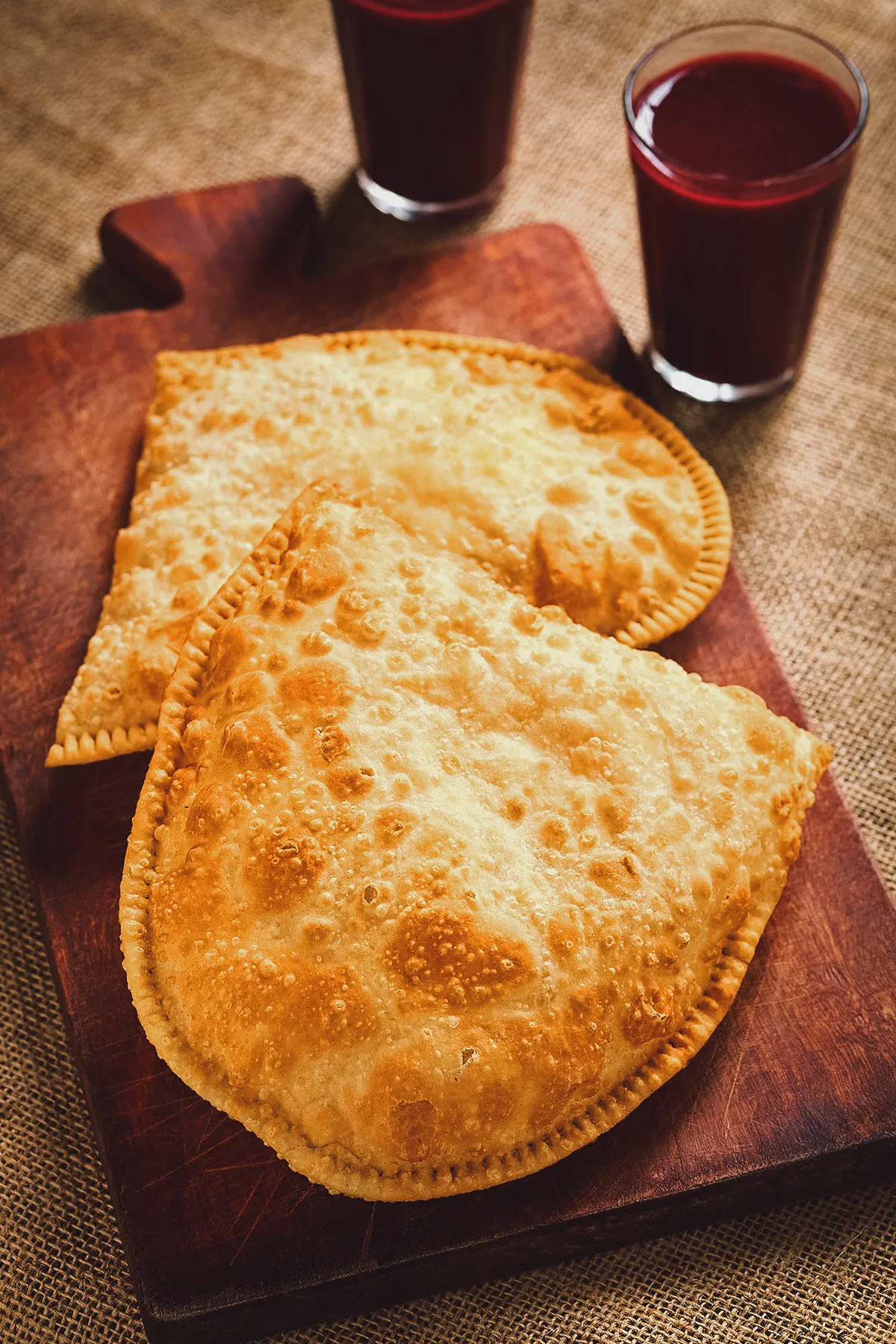
Photo by ildi_papp
2. Salteñas
The salteña is the national dish of Bolivia. It refers to a baked Bolivian empanada made with beef or chicken mixed with olives, potatoes, vegetables, hard-boiled egg, raisins, and spices in a sweet and slightly spicy sauce. Salteñas are so juicy that you can think of them as a type of stew served inside a pastry.
To achieve this characteristic juiciness, gelatin is added to the stewed filling before the mixture is chilled and hardened in the refrigerator. This keeps the dough from getting soggy while the salteñas are being put together. When baked, the mixture melts into the delicious stewy filling salteñas are known for, much like Shanghainese xiao long bao.
Unlike regular empanadas, Bolivian salteñas are more football-shaped with a braided top crust. Aside from its stewed filling and shape, it’s also known for its orange-brown color which it gets from urucú or achiote seeds (annatto) mixed into the dough.
Salteñas are a hugely popular street food in Bolivia. In La Paz, they’re sold from early in the morning and are typically eaten for breakfast or as a mid-morning snack with coffee or fresh fruit juice. So popular are salteñas as street food that they’re almost never made at home in Bolivia.
It’s interesting to note that the name salteña means “a woman from Salta”, Argentina. It’s believed that the recipe for Bolivian salteñas was created by an Argentinian woman named Juana Manuela Gorriti. She was born in Salta but was later exiled to Potosí, Bolivia during the dictatorship of Juan Manuel de Rosas. Her family endured extreme poverty so she created the recipe for salteñas as a means to survive.
Today, salteñas are among the most beloved Bolivian foods. They were so popular at the time that it was common for people to tell their kids “Ve y recoge una empanada de la salteña”, meaning “Go and pick up an empanada from the woman from Salta”.
RECIPE: Salteñas
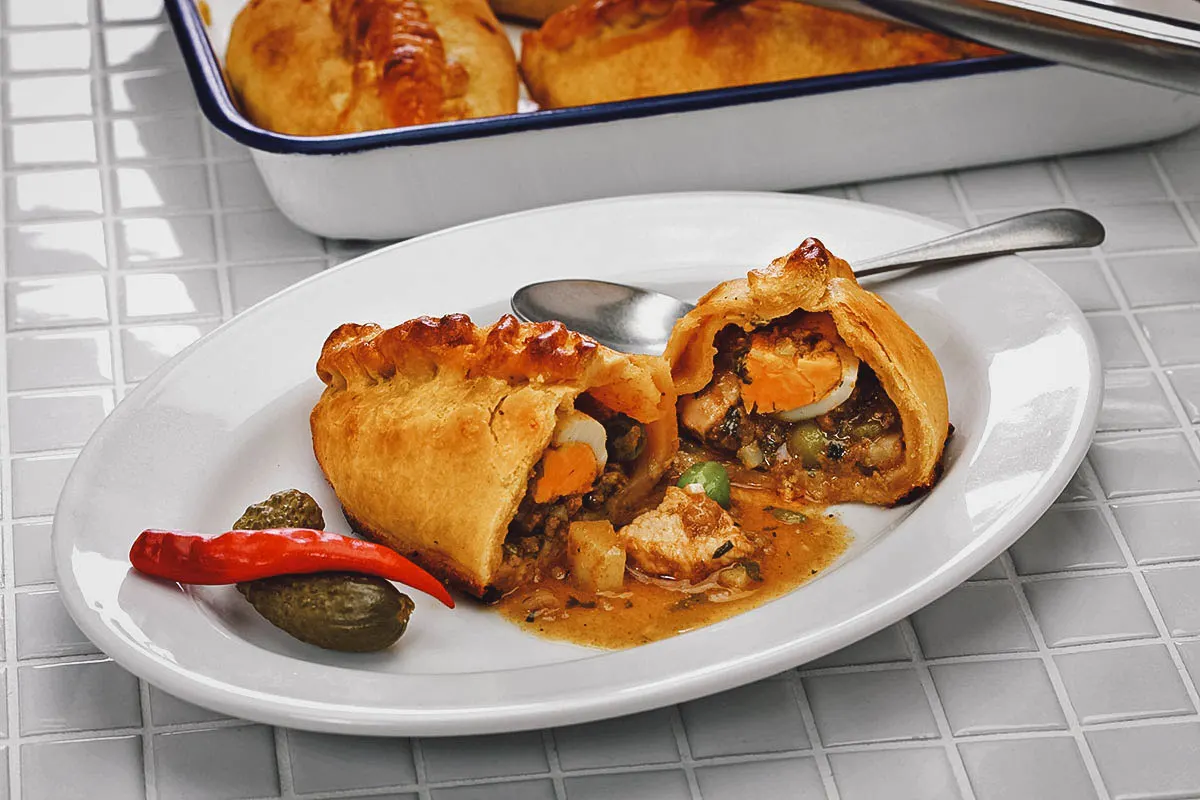
Photo by asimojet
3. Anticuchos
Anticuchos are skewered and grilled meat and offal dishes. They’ve existed in the Andean region since pre-Columbian times, but modern versions of the dish have become popular in many countries throughout the South American continent, most notably in Bolivia and Peru.
In Bolivia, anticuchos are typically made with beef or chicken heart marinated in vinegar, garlic, and a host of herbs and spices like cumin, black pepper, salt, oregano, mint, and parsley. They’re commonly sold by street food vendors in La Paz called anticucheras, and often served with roasted potatoes and a spicy aji peanut sauce.
RECIPE: Anticuchos Bolivianos
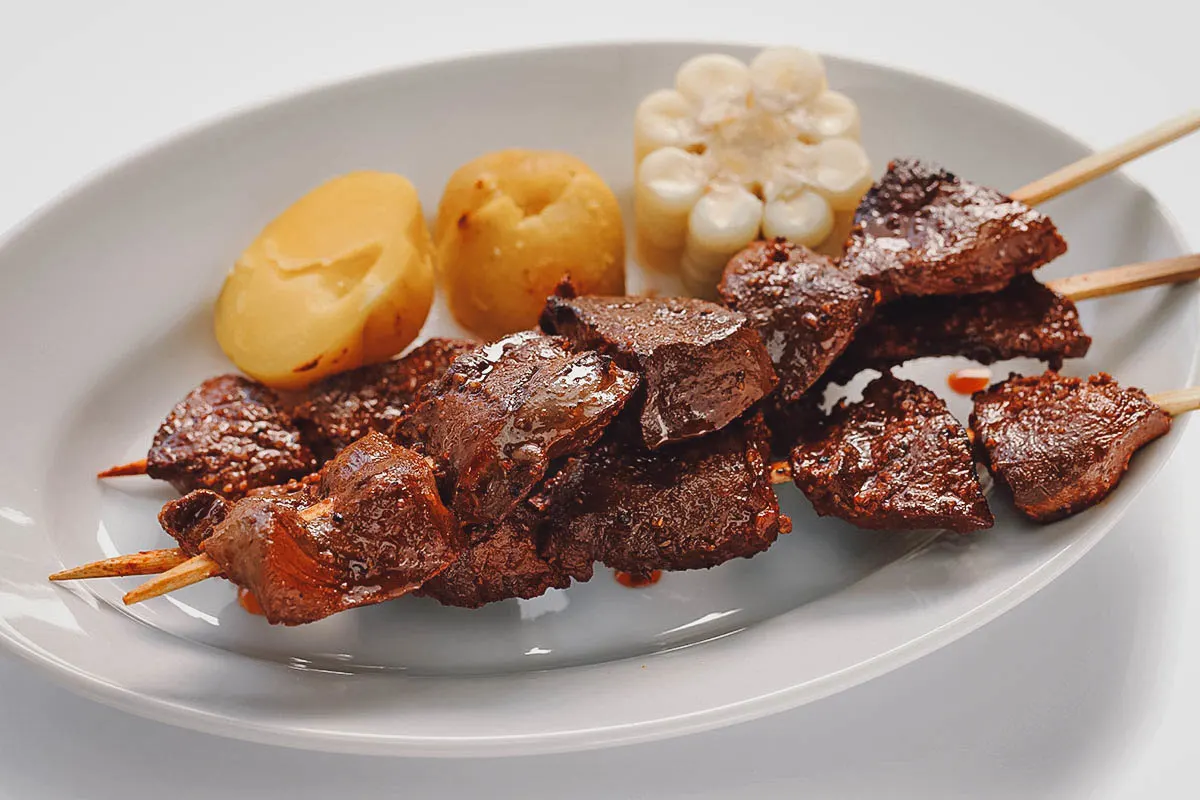
Photo by asimojet
4. Salchipapas
Salchipapa refers to another popular street food dish in Bolivia. It’s originally from Lima, Peru but it’s become popular in many Latin American countries like Bolivia, Ecuador, and Argentina.
Bolivian salchipapas consist of thinly sliced pan-fried beef sausages served with fried potatoes. The dish’s name is a portmanteau word for salchicha (sausage) and papa (potatoes). It’s typically served with ketchup, mustard, and aji chili sauce along with garnishes like cheese, a fried egg, lettuce, and tomatoes.
RECIPE: Salchipapas
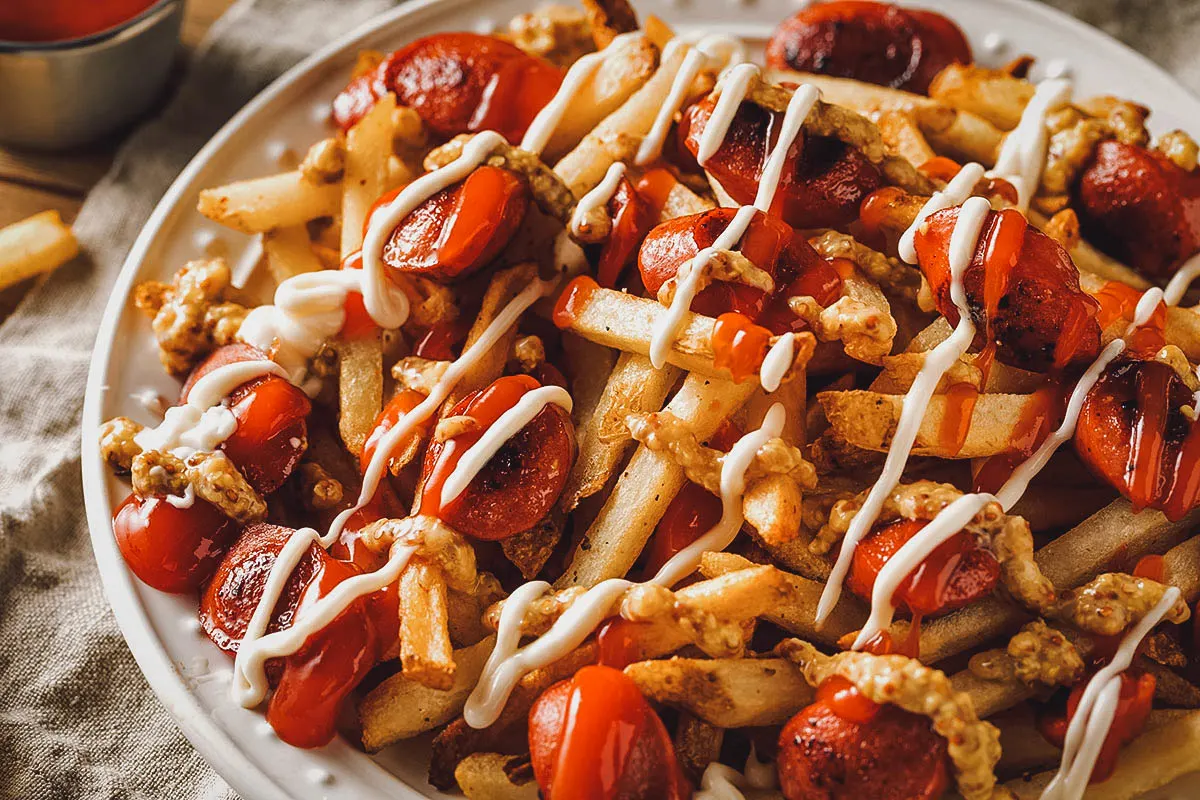
Photo by bhofack2
5. Sopa de Mani
Sopa de mani literally means “peanut soup”. Originally from Cochabamba in central Bolivia, it refers to a traditional Bolivian meat and vegetable soup thickened with ground peanuts.
Sopa de mani is traditionally made with beef ribs or chicken but it can be prepared without meat as well. Different types of vegetables can be used in the soup. It’s sometimes made with macaroni or rice and garnished with fresh herbs and french fries (or sweet potato fries). It’s often served with crusty bread and llajua, a spicy Bolivian salsa made with locoto chili peppers.
RECIPE: Sopa de mani
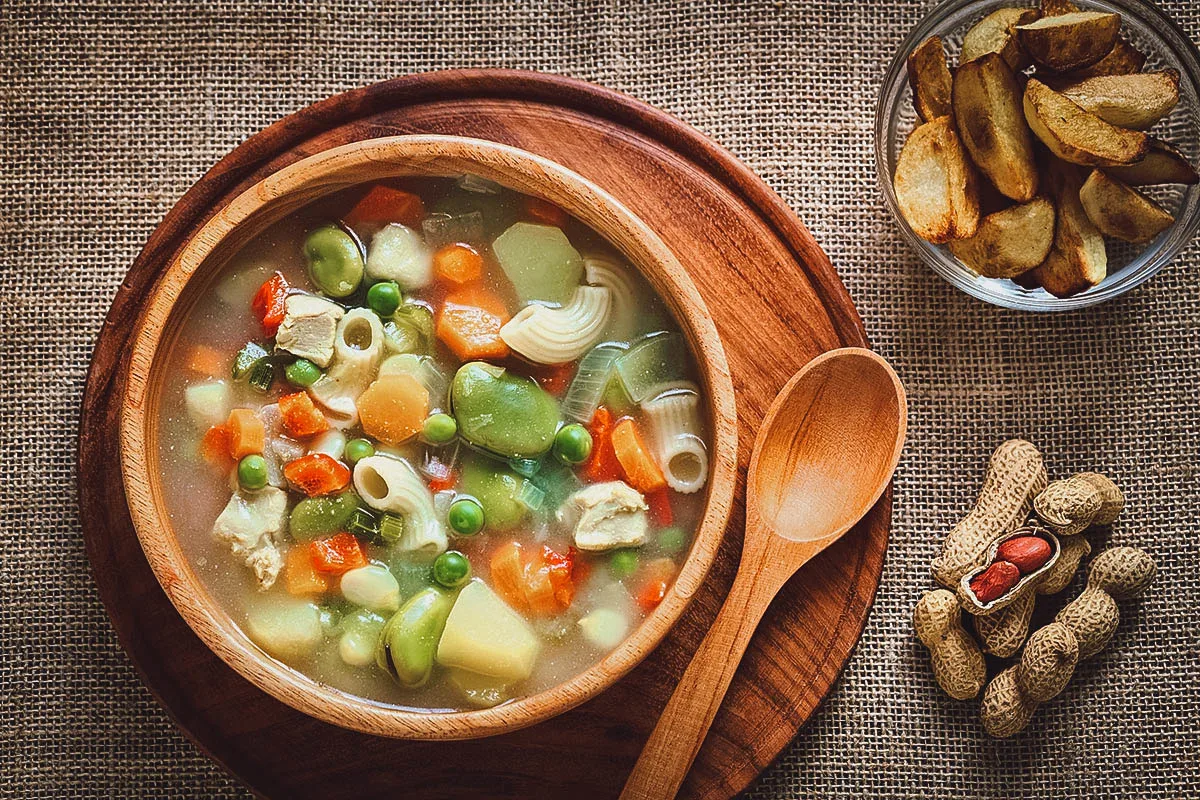
Photo by ildi_papp
6. Locro
Locro refers to a thick and hearty Bolivian squash stew traditionally consumed by the people living in the Andes mountains. Aside from Bolivia, it’s also common in Peru, Ecuador, Chile, Paraguay, and Argentina where it’s regarded as a national dish.
Recipes for locro vary but it’s traditionally made with squash, corn, vegetables, and some type of meat – usually beef, charque, or chicken. It’s often made with other ingredients as well like beans, pumpkin, onions, and potatoes. In some areas, locro is made with a specific type of potato called papa chola. Native to the region, it’s a type of large, red-skinned Bolivian potato known for its creamy yellow flesh and unique flavor.
RECIPE: Locro de gallina
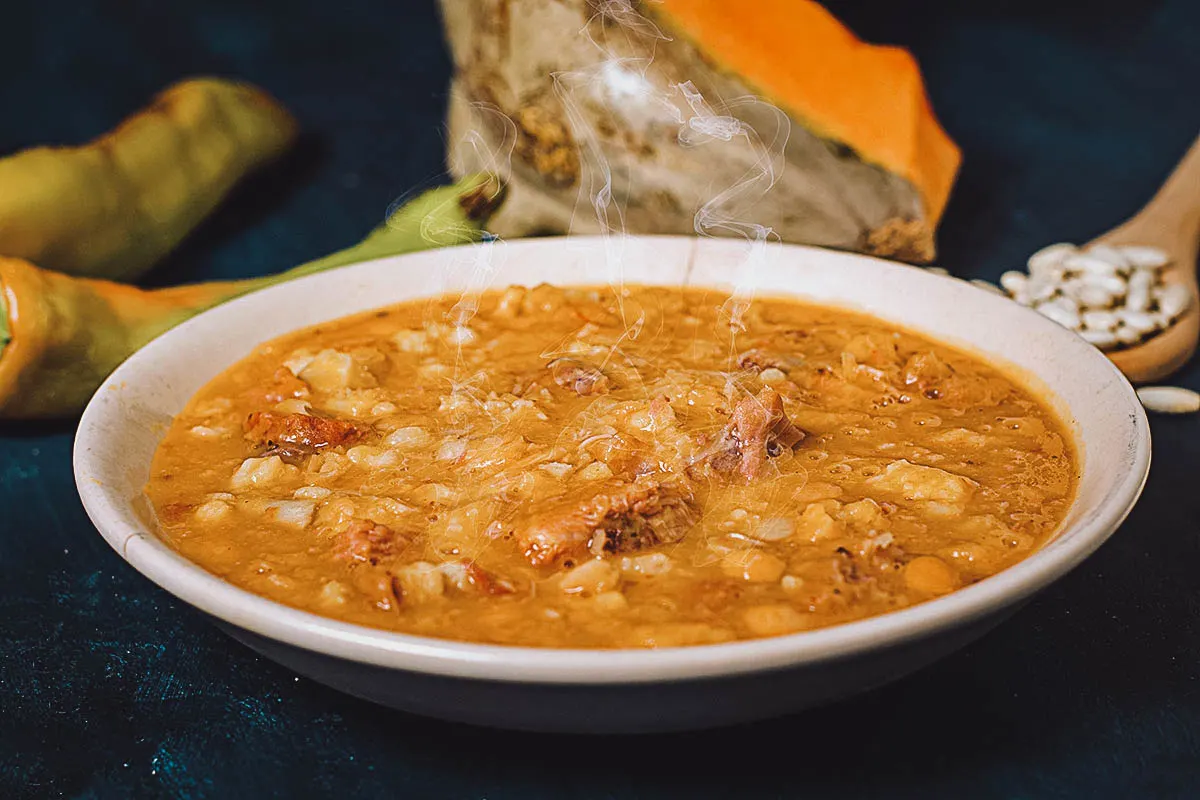
Photo by maxital
7. Silpancho
Like sopa de mani, silpancho is a traditional Bolivian dish hailing from Cochabamba. It’s a substantial meal consisting of white rice covered by a pounded cutlet of breaded beef, boiled potatoes, chopped tomatoes, onions, beets, parsley, and a fried egg.
Silpancho is traditionally made with a breaded cutlet but it can be made with diced and cooked meat served over rice as well. A sandwich version of the dish called trancapecho also exists. It’s an absolute monster of a sandwich with all components of the classic silpancho – including the rice – miraculously stuffed in a bun.
Silpancho is said to have been invented by Celia la Fuente Peredo. The dish has become so emblematic of Cochabamba that it’s often the only dish served at many restaurants in the city. According to this blog, restaurants had a light outside to signify if silpancho was available that night. If it was covered, then it meant that the restaurant was still busy cooking up the next batch of silpancho.
The name silpancho stems from the Quechua word sillp’anchu, meaning “thin and pounded”, in reference to the breaded cutlet traditionally used in the dish.
RECIPE: Silpancho
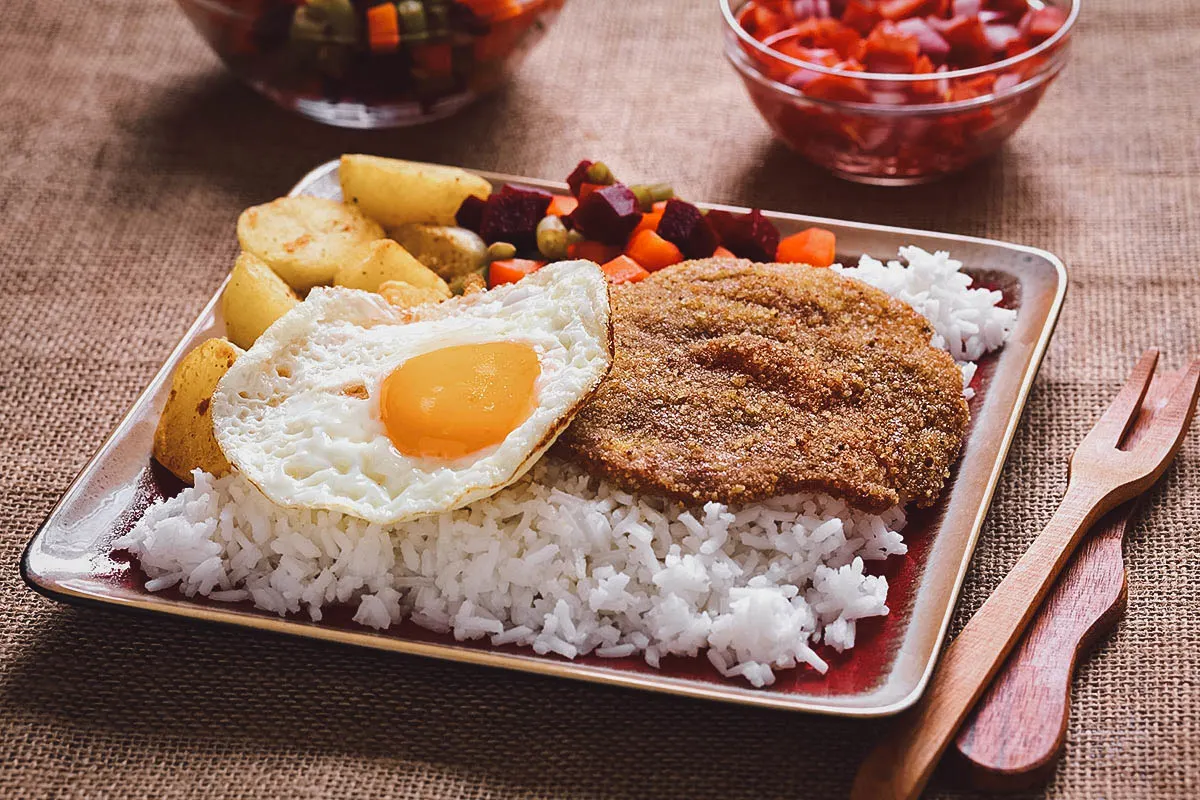
Photo by ildi_papp
8. Pique a lo Macho
In the spirit of the silpancho, pique a lo macho is another overflowing plate of food from Cochabamba. I don’t know what it is about Cochabamba but they seem to be fond of these gargantuan plates of food that were designed to test your manhood.
Pique a lo macho (or pique macho) is made with strips of beef, sausages or hot dogs, french fries, onions, tomatoes, locoto chili peppers, and hard-boiled eggs served with ketchup, mustard, and mayonnaise. Smaller portions of the dish are simply called pique, while pique macho refers to the giant version often made spicier with the addition of pimenton.
According to legend, a group of drunk workers arrived at a restaurant in Cochabamba just as they were closing. The owner didn’t have anything to feed them but the workers insisted they’d eat anything. She went into the kitchen and proceeded to put together whatever ingredients she had left. To help them sober up, she made the dish extra spicy and said “Piquen si son machos”, meaning “Eat it if you think you’re man enough”. And so was born pique a lo macho.
True to its origins, pique macho is popular drunk food in Cochabamba and other cities in Bolivia. Macho men will try to conquer it on their own but it’s really a dish that’s meant to be shared between two or more people.
RECIPE: Pique a lo macho
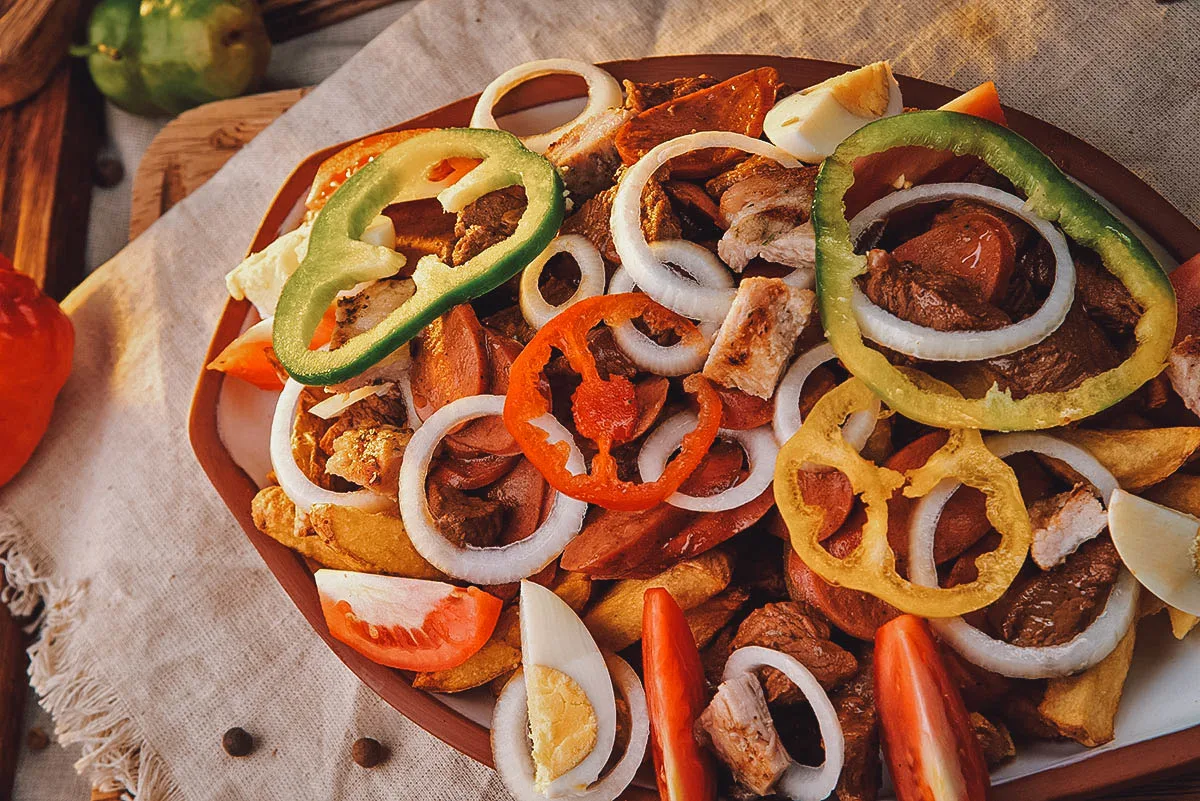
Photo by carloandrefu
9. Picante de Pollo
Picante de pollo (spicy chicken) is another popular Bolivian dish originally from Cochabamba. There are probably as many recipes for this spicy chicken dish as there are Bolivian cooks, but the key ingredients in an authentic picante de pollo, aside from the chicken, are aji amarillo chili peppers and chuño. Chuño refers to a type of freeze-dried potato native to Bolivia’s Andean region.
To make picante de pollo, pieces of chicken are cooked in chicken broth with finely chopped onions, garlic, cumin, and pureed aji amarillo. It’s garnished with fresh chopped parsley and often served with white rice, boiled potatoes, chuño, and salsa.
RECIPE: Picante de pollo
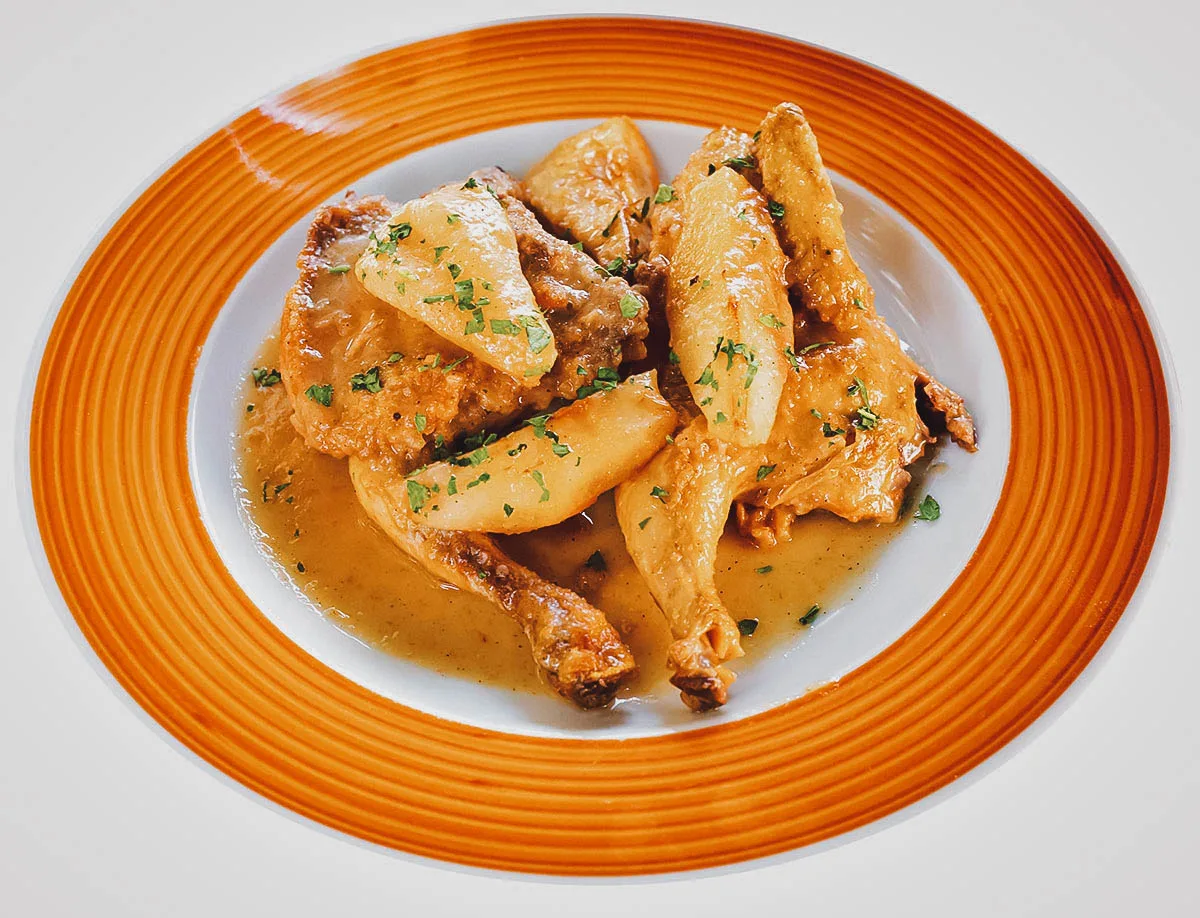
Photo by Jim_Filim
10. Milanesa
Milanesa refers to a slice of meat that’s pounded thinly and breaded before being fried. Popular throughout the Americas, it’s essentially the South American version of the Italian cotoletta, German/Austrian wiener schnitzel, French escalope, or Japanese tonkatsu.
Many different versions of milanesa exist throughout Latin America but the term can be used to describe any type of meat that’s been pounded thin, breaded, and then shallow-fried. It’s similar to the cutlet in a silpancho though not quite as thin. It’s typically made with beef, chicken, veal, or pork and served with different side dishes like rice, potatoes, eggs, or salad.
The name of the dish is said to be derived from the original cotoletta alla milanese from Milanese Lombard cuisine. It was brought to South America by Italian immigrants during the mass emigration of the late 19th and early 20th centuries.
RECIPE: Milanesa
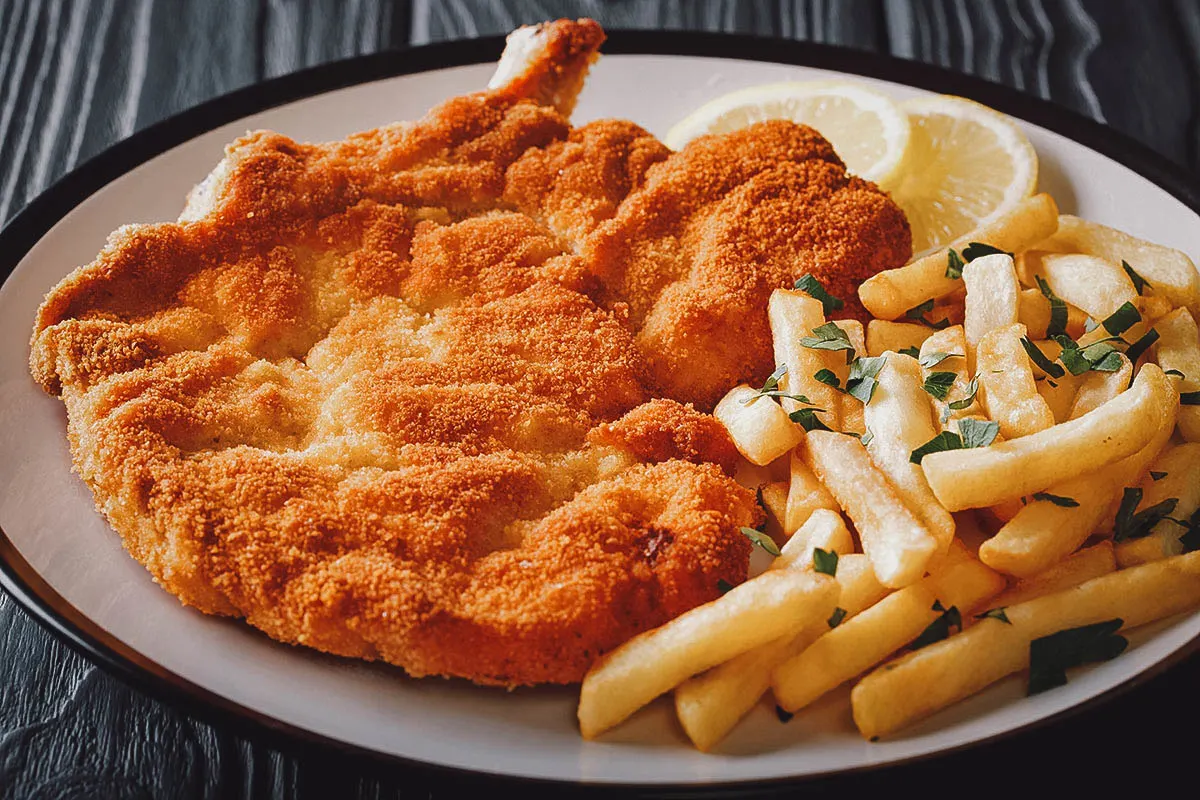
Photo by lenyvavsha
11. Quinoa
Bolivia is one of the biggest producers of quinoa in the world. It’s second only to Peru. Together, both countries account for about 97% of global quinoa production so it’s no surprise that dishes made with quinoa are among the best things to eat in Bolivia.
For centuries, quinoa has been a dietary staple for Bolivians living in the Andean region. It’s an indigenous crop that people have been relying on for subsistence for nearly 7,000 years. Until recently, urban-dwelling Bolivians regarded quinoa as poor man’s food, but the crop’s recent global popularity has caused that sentiment to change.
In 2000, a pound of quinoa was worth about $0.25. In 2014, that price shot up to $4 per pound, a staggering increase of about 1,600% in less than 15 years! The price has since mellowed to about $0.60 per pound as recently as 2018, but not before some Bolivian farmers could take advantage of the boom and improve their economic situation.
Quinoa’s newfound reputation as a superfood does come at a price. Rising quinoa costs have reduced local consumption in Bolivia by a third, making what was once a fundamental part of the Bolivian diet too expensive for many locals.
RECIPE: Quinoa sopa de mani
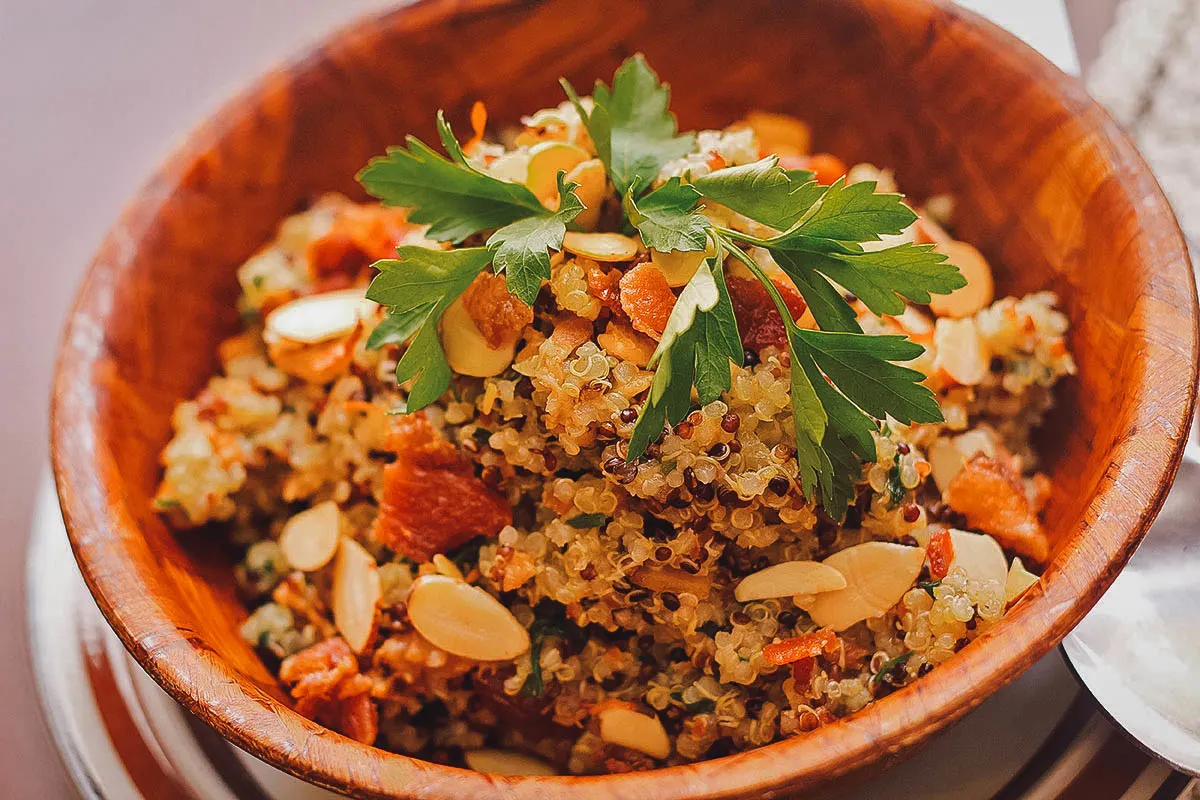
Photo by ezumeimages
Quinoa is used in many Bolivian dishes like salads, soups, humintas (Bolivian tamales), porridge, and stews.
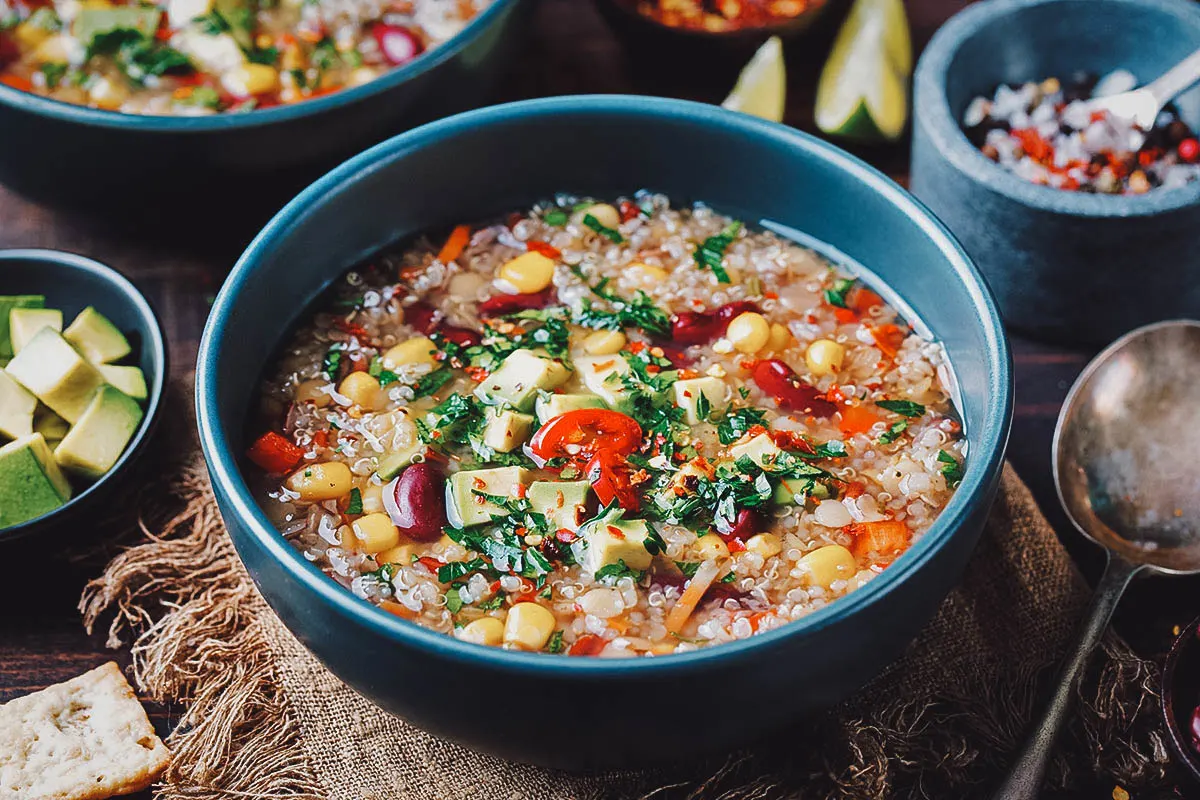
Photo by anna.pustynnikova
12. Charquekan
Charquekan refers to a traditional Bolivian dish made with charque, mote (boiled corn kernels), slices of cheese, hard-boiled eggs, boiled potatoes, and llajua (Bolivian hot salsa). Charque is the Spanish word for jerky and refers to an ancient method of preserving beef or llama meat by salting and drying it in the sun.
Charquekan is originally from the city of Oruro but it’s popular throughout Bolivia. In many regions, charque is an important source of protein and forms an essential part of the Bolivian diet.
RECIPE: Charquekan
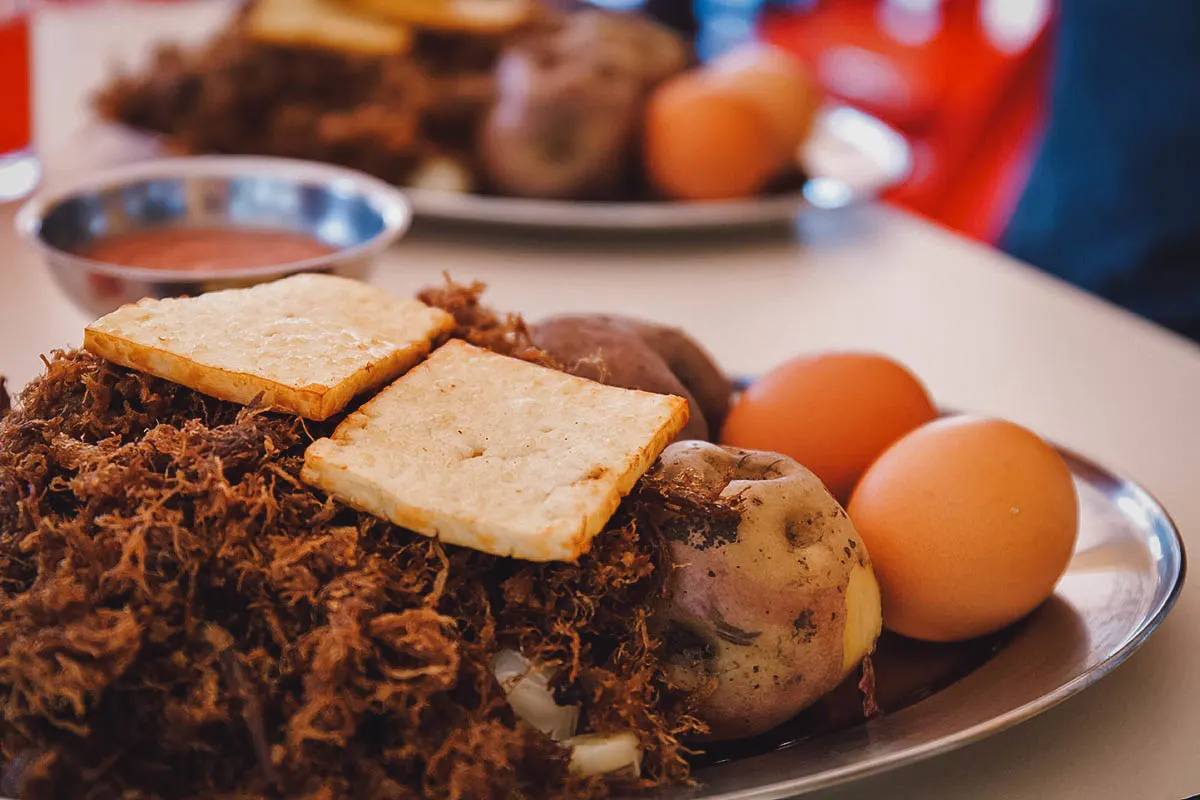
Photo by alekseigl
13. Pasankalla
Pasankalla (or pasacalla) is basically a large type of sweetened Bolivian popcorn. But unlike regular popcorn, it’s made with a different type of large-grained corn called p’isanqella.
Pasankalla was traditionally produced in the towns near Copacabana and Lake Titicaca. P’isanqella grains were placed in clay pots that were heated until the kernels burst. They’re always sweetened with sugar and sometimes dyed in different colors like pink, blue, and green.
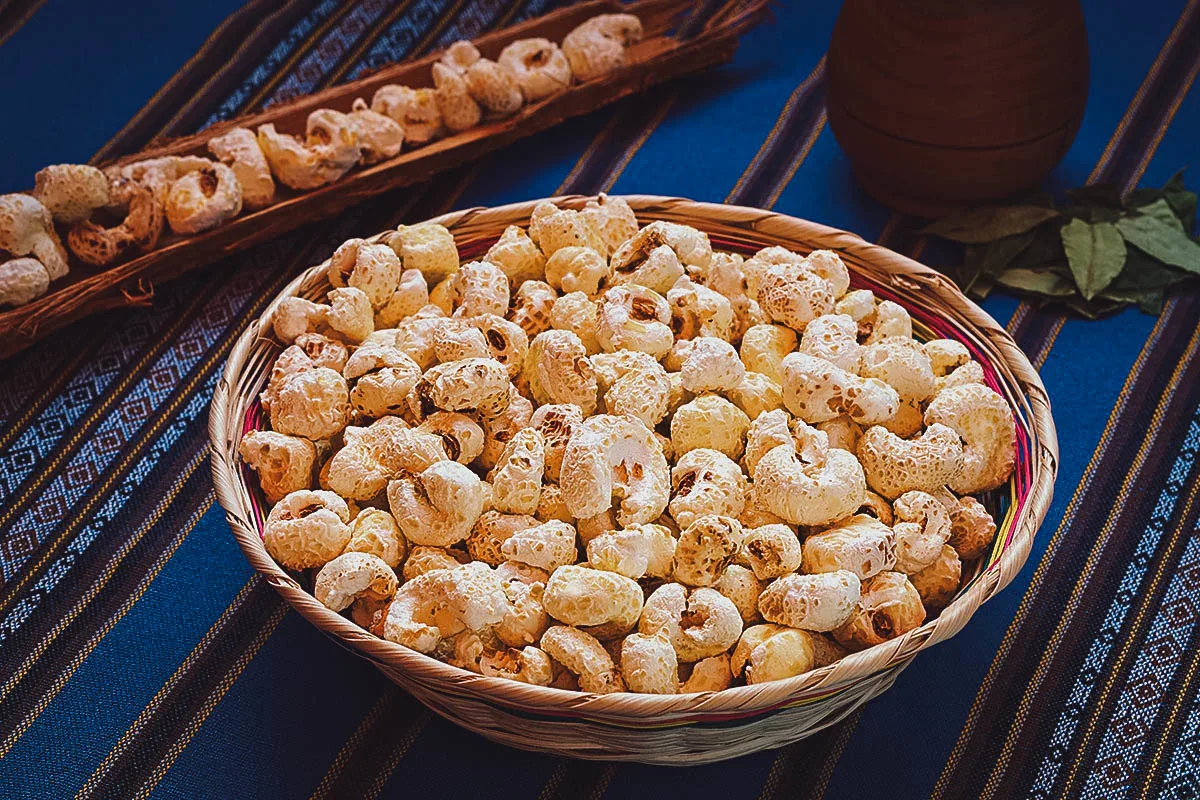
Photo by ildi_papp
14. Api Morado
The Andean highlands are known to be chilly. To warm up, Bolivians would drink warm cups of api morado which is a thick and hearty Bolivian drink made from purple corn. It’s typically enjoyed for breakfast, often with pastries like pastel de queso or buñuelo.
To prepare, purple corn is mashed with cinnamon, cloves, and orange zest. It’s sweetened to taste with sugar and can be served hot or cold. Often thick enough to eat with a spoon, it’s taste has been likened to a steaming cup of liquid corn sugar.
It’s worth noting that a similar drink called api blanco is also popular at the Bolivian breakfast table. It’s made with milk, cinnamon, cloves, and the kernels from a large type of white corn called morocho. It’s sweetened to taste with sugar and often topped with black or golden raisins.
RECIPE: Api morado
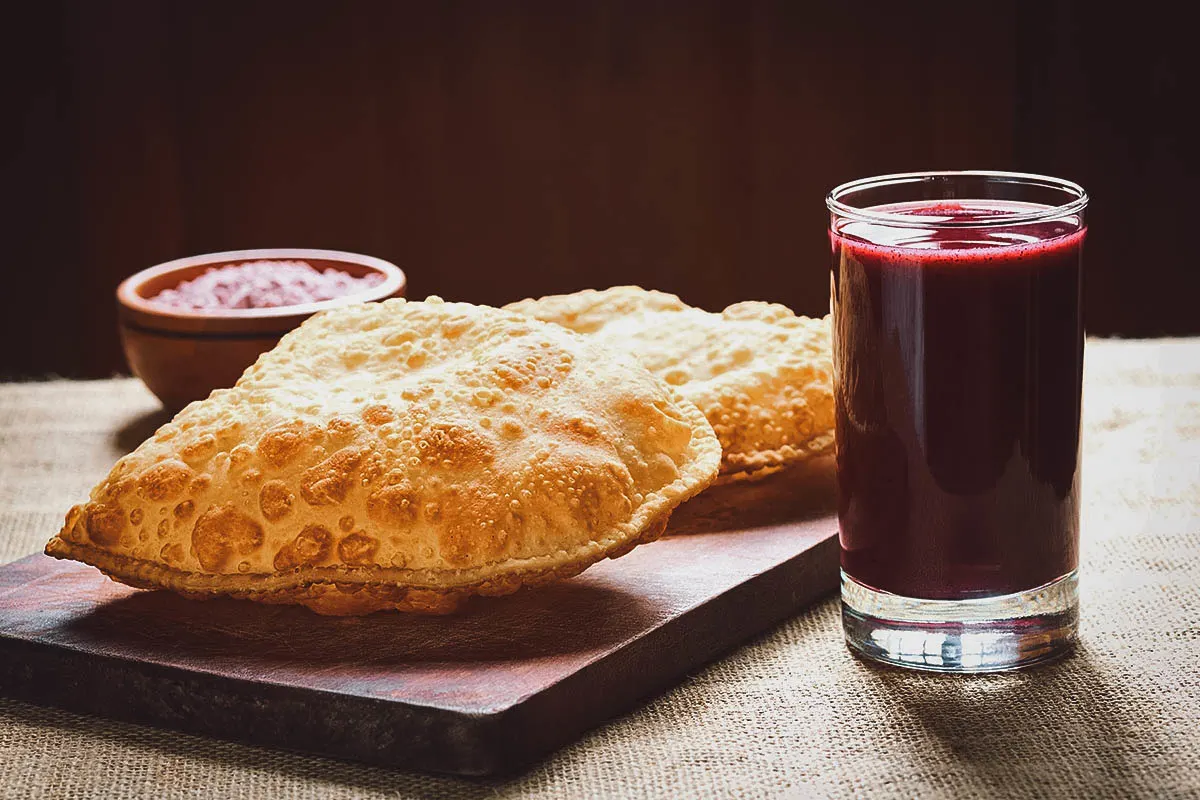
Photo by ildi_papp
15. Mocochinchi
Mocochinchi refers to a type of Bolivian cider made from dehydrated peaches. It’s perhaps the single most popular drink served in Bolivia. It’s typically sold by street food vendors from large glass jars with other Bolivian drinks like chicha and somó.
Mocochinchi is made with dehydrated whole peaches, orange juice, water, black raisins, lemon zest, cinnamon, and sugar. It’s a sweet and refreshing drink that becomes even more popular in the summer.
RECIPE: Mocochinchi
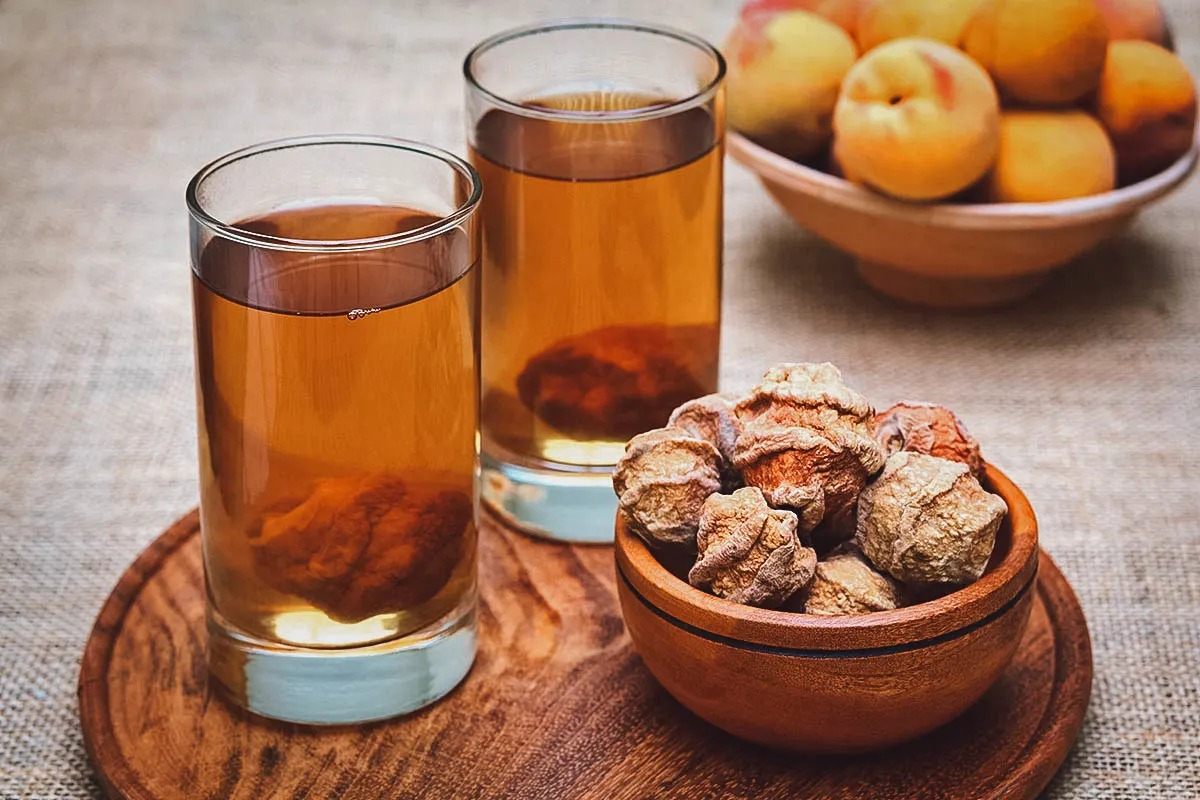
Photo by ildi_papp
BOLIVIAN FOOD TOURS
It goes without saying that no one knows Bolivia’s cuisine better than a local, so what better way to experience the food in Bolivia than by going on a food tour? A knowledgeable guide will lead you to the city’s best restaurants, markets, and food stalls so all you have to do is follow and eat. Check out Get Your Guide for a list of food tours in La Paz and other cities throughout the country.
FINAL THOUGHTS ON THE FOOD IN BOLIVIA
Bolivia’s cuisine isn’t as celebrated as other South American cuisines, but this is to be expected from a country that gets just a fraction of the tourists as its more visited neighbors. But that says little about the cuisine as a whole or its potential for global recognition.
Bolivia is an agriculturally rich country blessed with myriad varieties of potatoes, maize, chili peppers, carrots, and quinoa. With so much potential for flavor, it’s only a matter of time before people start flying to Bolivia as much for its food as they do for its salt flats.
Disclosure
Some of the links in this article on Bolivian foods are affiliate links, meaning we’ll make a small commission if you make a booking at no extra cost to you. As always, we only recommend products and services that we use ourselves and firmly believe in. We really appreciate your support as it helps us make more of these free travel and food guides. Gracias!
Cover photo by asimojet. Stock images via Depositphotos.


Barbara
Friday 10th of March 2023
I love this article. Truly, Bolivian cuisine is so much underrated. I only got to know about from a quiz( Buzz feed) . i hope it get the recognition it deserves soon enough.
JB & Renée
Wednesday 29th of March 2023
Happy you appreciated it Barbara!
Criolla
Friday 29th of July 2022
Missing the most popular dish Aji de fideo, and Chairo the typical soup from La Paz. Look for a recipe for bolivian Aji de Fideo.
JB & Renée
Friday 29th of July 2022
@Criolla: Thanks for the suggestions!
MONIC
Tuesday 28th of June 2022
In the city of La Paz we can taste the delicious Killa "The empanada Kitchen" in the sothernzone Calatoto Plaza Balaguer
JB & Renée
Friday 15th of July 2022
Thanks for the suggestion Monic! I just googled it and it looks delicious.